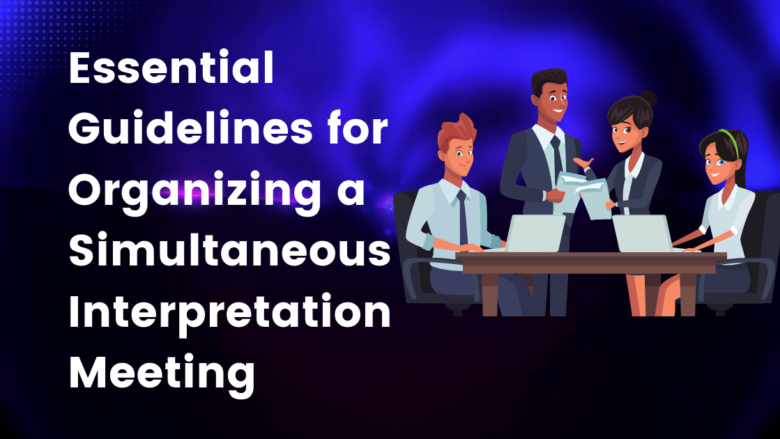Simultaneous interpreting translates a speaker’s message into a different language in real-time. It is an efficient interpreting mode that allows the speaker’s thoughts to flow. Simultaneous interpreters do not interrupt the speech; instead, they interpret the message while the presenter addresses the participants. Interpreters may offer an in-person interpretation or use a global interpreter platform. Simultaneous interpretation is ideal for large events that do not allow delays in speech delivery. The method is mainly used in conferences, government sessions, and business meetings. In addition, simultaneous interpreting is used in press conferences and church services. It is not easy to set up a simultaneous interpretation meeting. The events require a lot of preparation to make them successful. Here is a guide to help you manage a simultaneous interpretation meeting.
Simultaneous Interpretation Traditional Equipment
You need to select the traditional hardware participants will use to listen to the interpretation. Many factors determine the simultaneous interpretation hardware you will use for your event. First, you should know the approximate number of people attending your meeting. Knowing the estimated attendees will ensure you buy extra hardware for backup. You also need to determine the number of languages that will need interpretation during the meeting. The information will help you know the number of transmitters to buy. When buying simultaneous interpretation hardware, you also need to know the properties of the portable systems. The location of the interpreters also matters when organizing a simultaneous interpreting event. You can set up a soundproof booth to promote the interpreter’s comfort. In addition, the interpreter can see the speaker’s cues and body language resulting in high-quality interpretation. A soundproof booth also provides a distraction-free environment enabling the participants to get the message without background noises. Lastly, consider the transmitter capabilities. If you plan to use infrared signals, ensure no obstructions in the space between the transmitter and the receiver. If this arrangement is impossible in your meeting layout, consider buying frequency modulation (FM) system transmitters.
Types of Interpretation System
Your choice of an interpretation system will determine the overall quality of the event. You need to know the different types of systems to make the right choice. The first type is the infrared system which uses invisible light pulses to transmit the message from the speaker. Participants will have headphones with multi-channel receivers to get the translated speech. When using infrared systems, you should avoid bright lights that may interfere with the systems.
Additionally, you need to place infrared systems in front of the audience with no physical barriers that may block speech transmission. If the meeting is large, you will need to buy more infrared emitters for better sound. Secondly, the handheld medium-range FM interpretation systems transmit sound through radio waves. The systems are lighter; hence suited for travel events. They are not sensitive to obstructions or light; therefore, you can hold an outdoor meeting. However, they have a limited transmission range. The long-range FM systems are suitable for venues exceeding three hundred meters. They are more powerful than medium-range systems but are heavier.
What’s more, setting up the systems takes a lot of time. Due to the higher power, the systems cancel radio interferences better and improve sound quality. They are cheaper in the long run than handheld systems. These systems are portable, but they are not mobile. You must set up the transmitter at a fixed location and ensure the speaker and participants are closer to it for audibility.
Interpreter Booth
If you use traditional equipment for simultaneous interpretation, you need an interpreter booth. The booth provides a comfortable space for the interpreter and influences interpreting quality. Soundproof booths eliminate background noises enabling attendees to get the message loud and clear. There are different types of interpreter booths; permanent and mobile. Your choice will depend on your needs. The booths also come in various shapes; you may find a full-size or a tabletop booth. Transportation and setting up tabletop booths are easier. However, they have an open back which does not guarantee the interpreter’s comfort. Full-size booths have floors, walls, ceilings, and ventilation systems. They offer ideal working conditions for the interpreter and can accommodate at least two people. On the downside, the booth is harder to transport and assemble, forcing you to hire technicians.
Conclusion
Meetings with participants speaking different languages are hard to organize. You need to rent the appropriate equipment, set up the systems, hire suitable interpreters and do other critical things. The article will guide you through the process to help you determine what is best for your event. The guidelines will reduce your stress and ensure you deliver impeccable simultaneous interpreting to your guests.










FIND US ON SOCIALS